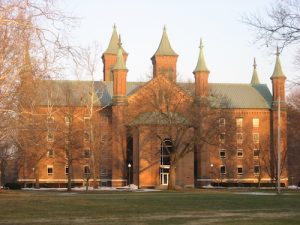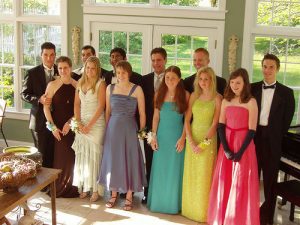South Coast freeways are more crowded than ever, but there are fewer bikes in the cul-de-sacs and not as many strollers being pushed toward neighborhood parks.
What’s more, skyrocketing home prices are squeezing out middle-class families and bringing in seniors and upper-income families who tend to have fewer children.
In the 1998-99 school year, the Santa Barbara Elementary School District had 6,201 students. This year there are 5,876 students enrolled, with the numbers projected to fall to 5,770 this autumn. Declining enrollment is expected to hit the junior high schools this fall for the first time since 1996 and spiral into the high schools just two years later.
Why is this a problem? While research backs the common-sense notion that smaller learning environments help boost student achievement, fewer students mean fewer dollars for schools that are already strapped for cash. Fewer students also mean fewer parents who are available and willing to pony up the volunteer hours and fund-raising dollars to help fill in that gap.
In an effort to deal with some of these challenges and make optimal use of the facilities and resources available to the schools, the Santa Barbara School Districts has hired local consultant Pat Saley to assist with updating the Facilities Master Plan, which was last completed in 2003. As part of the initiative, the district will request input from the community about the “big-picture” issues that affect the schools.
In addition to changing demographics and enrollment trends, this includes the possibility of designating additional space for pre-school programs, as well as permanent facility needs for the K-8 Open Alternative School, currently housed at La Colina Junior High; the K-8 Santa Barbara Charter School, currently housed at Goleta Valley Junior High; and the K-6 Santa Barbara Community Academy, currently housed at the downtown district office and at Santa Barbara Junior High, and soon to have some students housed at La Cumbre Junior High.
Also under discussion are what to do with excess space in schools, plans for the two properties the districts own — in Hidden Valley and near San Marcos High — that were once designated for new schools, how new projects should be funded, whether the districts should continue to allow student transfers, and if, hypothetically, an elementary school were to be closed or relocated, how that should be handled.
“We’re asking for input on how to best use our facilities and properties,” Superintendent Brian Sarvis said last week. “None of these decisions have been made … this is the beginning of that process.”
“The idea is to figure out our priorities,” said Saley, who emphasized that the meetings weren’t focusing on individual schools needs yet.
Saley said about 50 people attended the first three community meetings and that she will present a summary of their input to the school board June 14 or June 28.
Santa Barbara School Districts consultant Pat Saley can be contacted at 969.4605 or psaley@silcom.com with any comments or questions.


 Parents can relax a little this year, as skin is no longer quite so in for
Parents can relax a little this year, as skin is no longer quite so in for 
 Reading comprehension, retention is the name of this popular game
Reading comprehension, retention is the name of this popular game